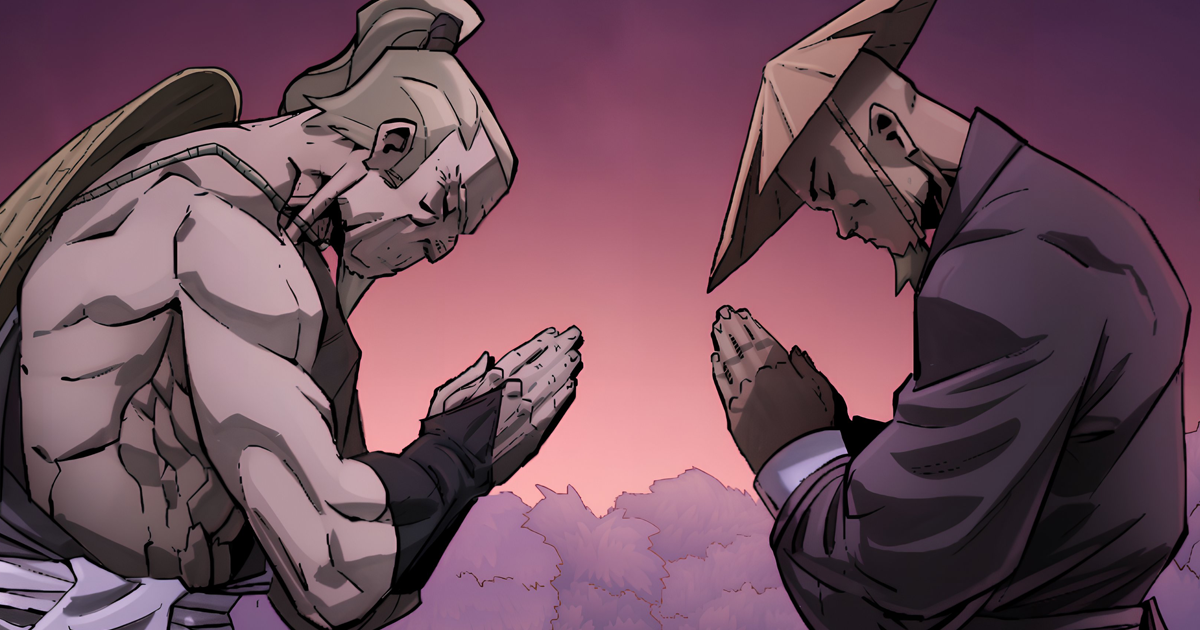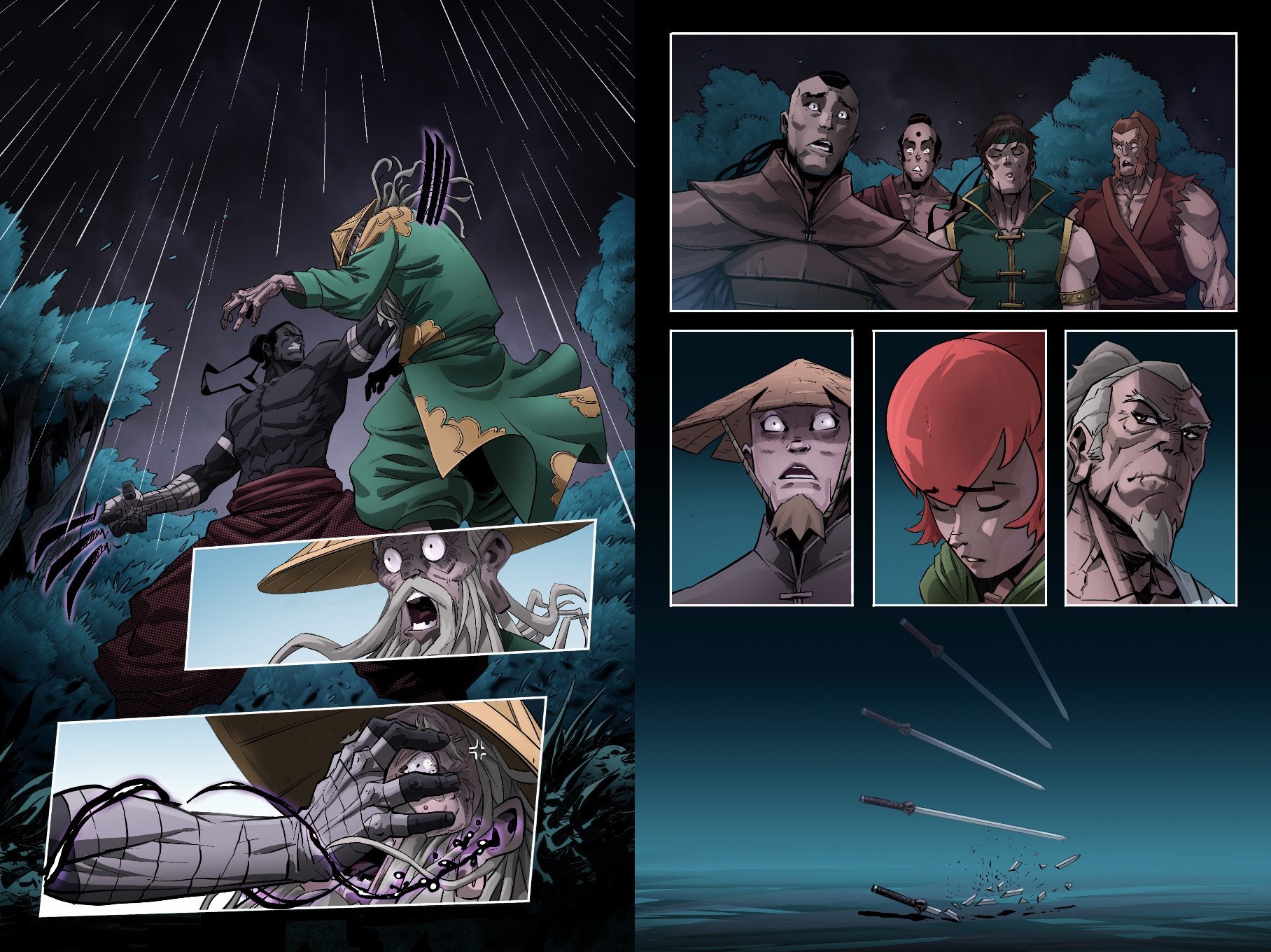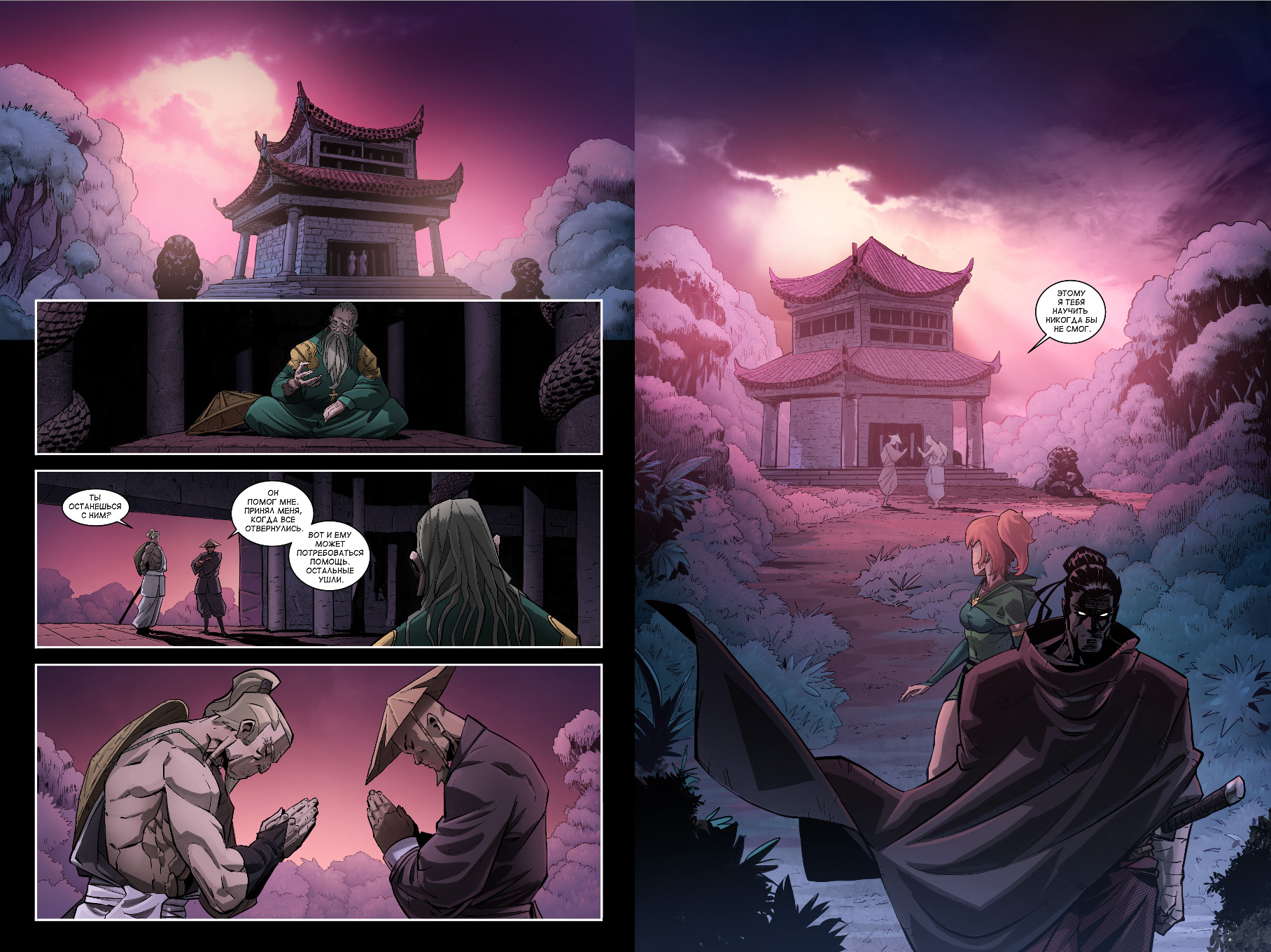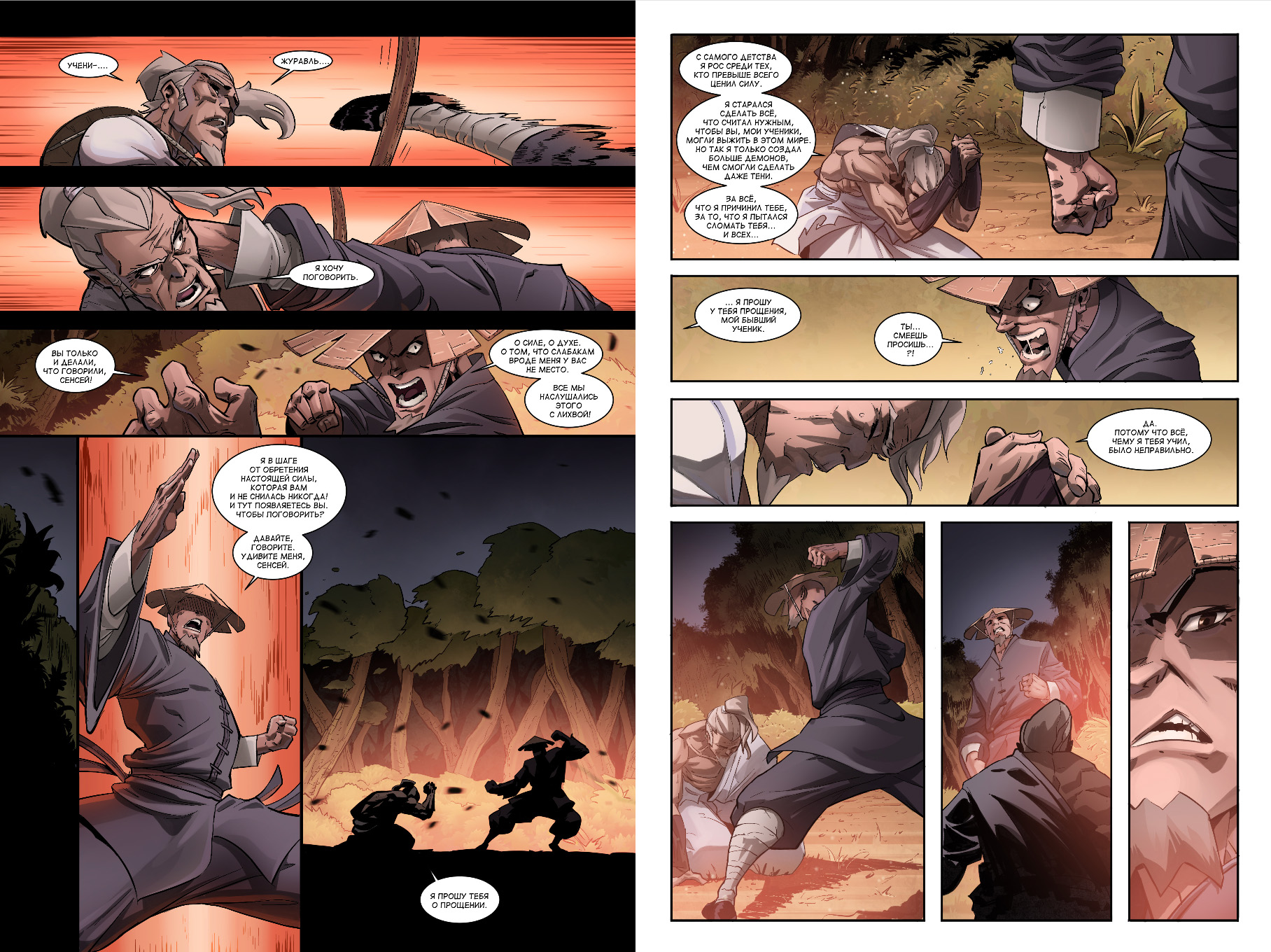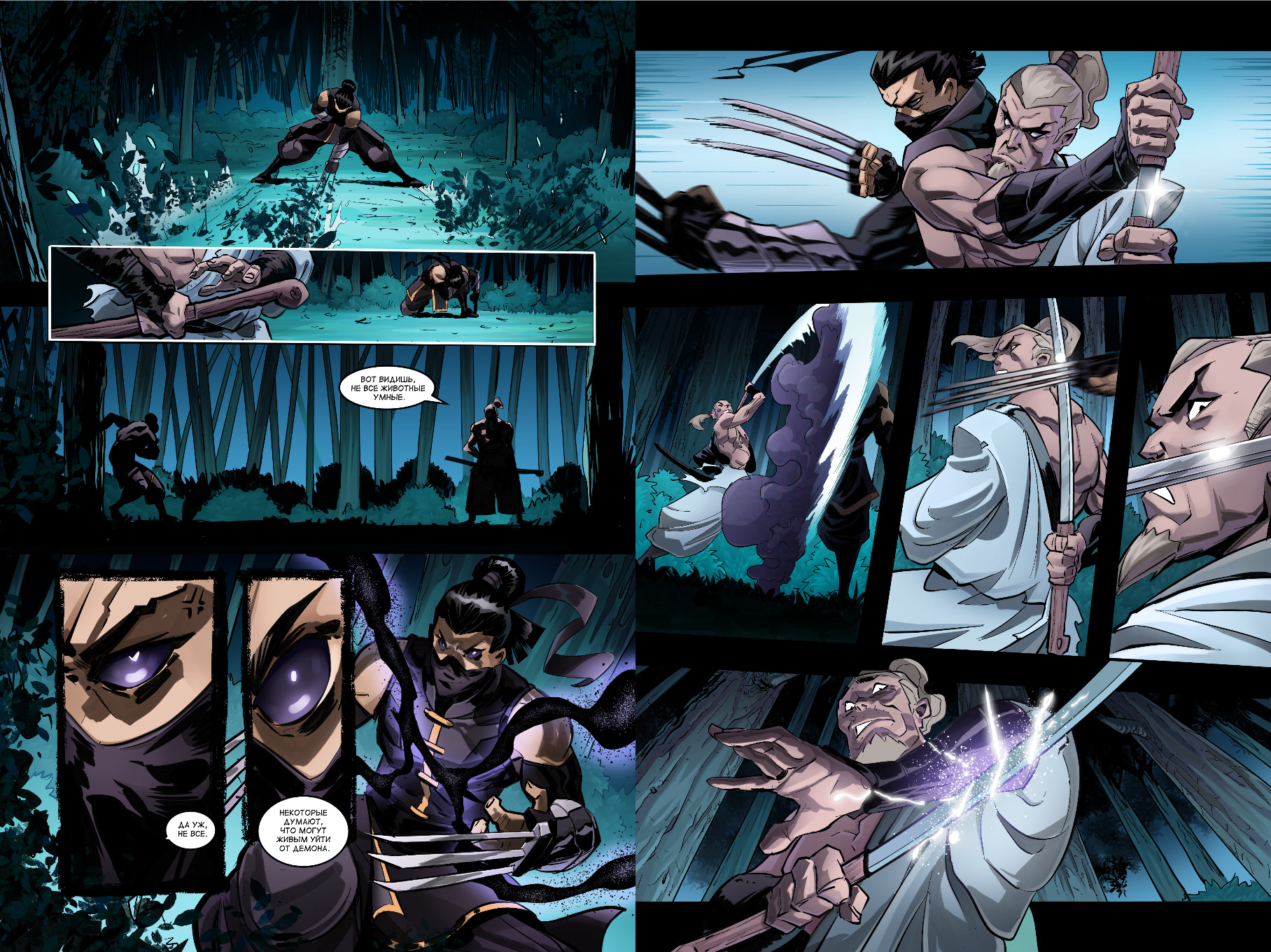In February, the official comic book for the Shadow Fight franchise appeared on the bookshelves of the CIS. We talked with Nikita Korzhavin, Nekki‘s business development director, about how the comic was being worked on and what task it solves for the game franchise.
Nikita Korzhavin
Alexander Semenov, Editor-in-Chief of App2Top: Nikita, hello! Congratulations on the appearance of the comic. It’s a lot of work. However, I want to start right away with a question that may seem rude to someone: and why? What kind of task does such projects usually face?
Nikita Korzhavin, Nekki Business Development Director: Sasha, hi! When you have Shadow Fight on your hands — a franchise with a 10-year history, an original and well-developed universe and hundreds of millions of players, sooner or later you come to think about expanding the product line
If everything is done correctly, then such cross-media projects will attract a new audience and help you earn money. But we are now talking, rather, about experiments on our part. We don’t have any clear strategy for the years ahead. We are moving iteratively, starting with small projects that we can fully control in order to be responsible for quality.
In addition, in 2022 Nekki celebrated 20 years since its foundation, so we planned the release of several projects to congratulate ourselves and to please the fans.
For example, back in October, together with Hobby World, we released the board game “Shadow Fight: Battle of Demons“, the first edition of which was sold out in the first three months. Now a comic book has been launched for sale — “Shadow Fight. Volume 1“. The Komilfo publishing house helps us with it.
Here you are talking about the fact that the project is experimental. Then the following question is natural: does the experiment have any KPIs?
Nikita: There aren’t any yet. Most importantly, we want to understand how viable such projects are. Well, to gain experience in creating comics, board games, to build connections in these industries.
Here I want to go straight to the question of numbers, since you and I have just touched on the aspect of viability. But it seems to me that it would be unfair to the comic itself as a product (it’s strange to ignore the elephant in the shop), and I also want to understand the amount of effort invested. So let’s talk about the numbers at the end, and now about the comic. When did you decide that you would make a comic book, what did you want to do at the start of the project, who did you focus on?
Nikita: First of all, we focused on ourselves, on our games.
Of course, we had art references, liked drawing comics on Overwatch, League of Legends, The Avatar: The Last Airbender, a number of books from Marvel/DC, Russian “Besoboy“…
I liked a lot of things, but there was no separate ref, it was important for us to find something of our own and make it cooler. Due to graphics, dynamics, composition, color, shadows.
So in the end, the main reference point was the art from our own Shadow Fight 2, which itself is drawn as a comic book.
But, as I understand it, the comic was not drawn by the same guys who drew art in the end? After all, 112 pages is a significant amount that would distract studio artists from development for a long time.
Nikita: Of course not. In fact, we have assembled a separate dream team for him:
- the script was written by Alex Hatchett, one of the most famous Russian comics artists, the author of the “Besoboy” series, who collaborated with Bubble for many years;
- the artist was Alexander Malyshev, a great artist who works brilliantly with action scenes (there are a lot of them in Shadow Fight);
- Natalia Nesterenko, who has worked on many Bubble projects and collaborates with a major American publishing house Boom, is responsible for the coloristics. Studios.
By the way, I was very pleasantly surprised when I found out that Hatchett was working on the comic. As an author, I know him from a wonderful educational comic about the scenario business “Write! Script It!».
Nikita: You know, after meeting Alex Hatchett, who turned out to be a fan of Shadow Fight, the whole story started spinning. As a result, it was very comfortable and interesting for us to work with him on the script
You just said that “you were comfortable working with him on the script.” That is, it’s not a story when the customer finds a good screenwriter and artist, gives them money, and then gets eliminated before the acceptance of the work?
Nikita: In our case, it wasn’t like that.
We were as interested as possible in the quality of the comic and therefore actively participated at all stages of production.
The work on the script took place in close contact with our game scriptwriters, so that everything was taking into account the peculiarities of the universe, so that any plot twists corresponded to the lore.
The art work was also carried out under the supervision of our art director.
At first, we moved exclusively on a page-by-page basis so that the entire comic book team understood our requirements and expectations. Well, the experience of Hatchett helped us a lot, who, in addition to the script, was engaged in layout, and also took on the role of a publishing editor who linked together all the processes of creating a book.
Given such immersion in the processes of Nekki employees, how difficult was it for them?
Nikita: Yes, like any project in a new area for the company, it was quite difficult, but very interesting.
How long did it take to bring the comic to life?
Nikita: It took us 10 months from the start of work on the script to the delivery of the book to the publisher.
I would divide the development into several stages:
- The script. And we wrote a script for two books at once. This work took us five months, but we started drawing when the starting chapter was already ready (there are three chapters in the first book). We spent one month on a synopsis of all the chapters, the rest of the time was spent on working out a full-fledged script.
- In parallel, they began to engage in the selection of an artist and a colorist. It also took us about a month.
- Full-fledged work with pages. First, the storyboard is a sketch of the composition of each panel. Then the black and white version, then the color.
Of course, when working on the first chapter, we spent extra time to coordinate the image of the characters, achieved the necessary filling from action scenes, looked for the right color somewhere, so the involvement of the guys from the game projects at this stage was quite large. But further such attention was not required. The comic book team perfectly felt the atmosphere of Shadow Fight, and all subsequent chapters received a minimum number of edits.
And how much did the production cost the company?
Nikita: The orders are as follows — several tens of thousands of dollars for the development of one book.
Is it just for production? Excluding printing and distribution?
Nikita: Yes, we pay only for production, then we transfer the comic to the publisher, and he is already doing his part: proofreading the text, finalizing some technical pages, prepress preparation of files, test releases, printing itself and then distribution.
Marketing is done by both sides (we are responsible for the promo among our audience).
And how do you divide the proceeds?
Nikita: Let me tell you better what practices there are today.
There may be differences in terms of income distribution. Western publishers mostly work with full recovery of their costs and only after that the split is read.
In the CIS, there may be options with full prepayment for the entire circulation, or with phased payments depending on sales. The amount of royalties is determined by the volume of circulation and the popularity of the franchise.
The orders are as follows: 5-20% of the wholesale price for the book (prices on store websites differ by 1.5-2 times from wholesale). Perhaps there are examples with more favorable conditions, but I share what we ourselves have learned in the process of various negotiations.
There are also options for the release of a comic book, when you pay the publisher to print a print run, and he is only engaged in distribution. In this case, the percentage of your revenue will be higher, but the costs and risks are much more significant.
We already figured out at the beginning of the conversation that this is an experimental project for you now, but it’s still interesting: can you, as a company, earn something from selling a comic book?
Nikita: It’s very difficult to make money from comics in the CIS.
Perhaps every publisher we talked to told us about this. And in general, manga and Chinese novels are trending now, and we have made a more classic comic. Therefore, we do not build any illusions. First of all, it was important for us to gain experience in developing such a project, to understand the industry and how the publishing process works.
The commercial success of the comic book will be possible only in the case of global publishing.
But the game also has a loyal core audience. Have you analyzed whether they will buy a comic book? And is it possible to get a plus if all the regular players buy a volume for themselves on the shelf?
Nikita: We talked on social networks with the players. Of course, mostly the idea went in, the audience wanted to get something physical on Shadow Fight. But putting a check mark “ready to buy” and buying later are actually different things. Therefore, we did not attach much importance to the results of these surveys. The main thing is that the partners with whom we publish comics and board games believed in us. If the core of the audience buys everything we produce, of course, it will be a very good plus.
What’s next? What are your plans for the development of the comic?
Nikita: First of all, I want to release the book in the USA. This is what we are doing now: we are negotiating with major publishers and working on some visual adaptation of the comic book for the American audience.
There is, of course, a different level of competition, and so far there has not been a single series on mobile games that could boast of large sales. On the other hand, successful comics can get a TV adaptation. We see how streaming platforms are now hunting for original IP for games, comics and even desktop games. Shadow Fight has already had a small collaboration with Netflix, so if we ever get to a TV project for our franchise, then the comic can be a great start for the script of the series.
Photo: Comme il Faut
We are also working on the second volume of Shadow Fight. There are plans to make a third volume. But whether there will be anything further depends on the results of the first books and whether we will be able to achieve global success.
And we also discovered webcomics — webtoons. This format originated in Korea 20 years ago, but it has gained worldwide popularity relatively recently. Webtoons mostly read on mobile devices, because each episode consists of a long vertical strip that creates an “endless” page, convenient for scrolling. Some webtoons contain musical accompaniment and animation. On their basis, full-fledged TV series, books and even games are released. In short, a very interesting topic. You can see examples here. We are making our own webtun, but for our other game — Spine. We want to try to use the webtun as one of the tools for forming the community of a new project.
Sounds interesting! We will wait for news! And thanks for the interview!

